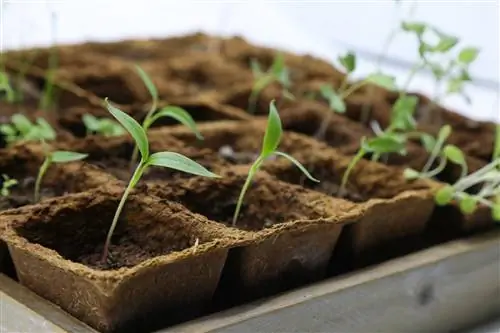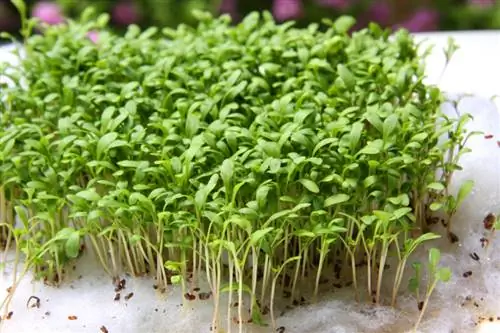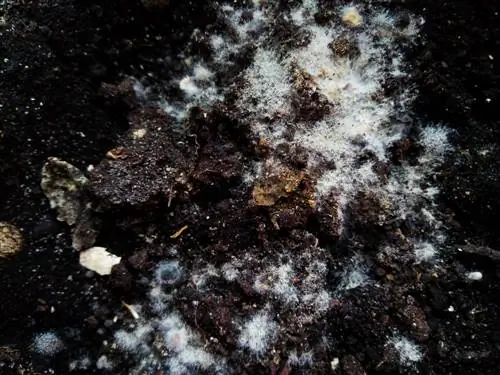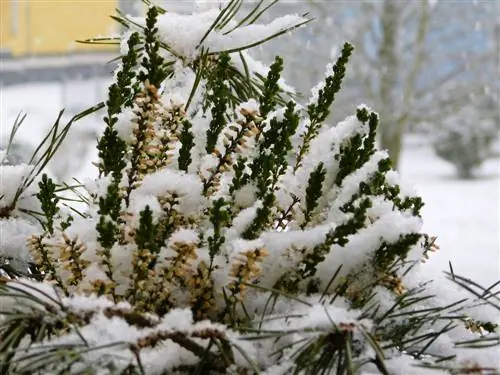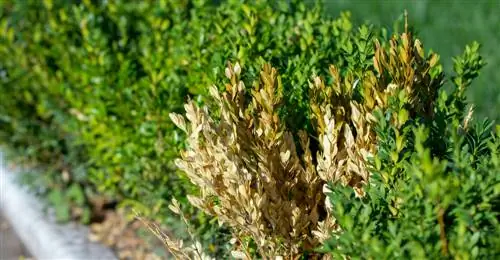- Author admin [email protected].
- Public 2023-12-16 16:46.
- Last modified 2025-01-23 11:22.
Sometimes cultivation pots, especially in the lower part, become covered with a layer of mold “overnight”. However, mold is anything but beneficial for young plants. That's why it's important to stop it from spreading quickly. This can even be done without chemicals.
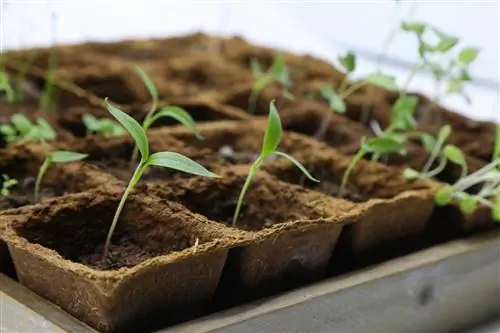
What can I do if the outside of my growing pots is moldy?
Take action against mold immediately so that the plants are not damaged. Mold infestation is encouraged by high lift humidity. Absorbent pots made of organic material are particularly affected. Stop watering temporarily, remove any covers and move the growing pots apart.
Why do nursery pots get moldy?
Growing pots become moldy if they aremoist for a long time or continuously. Growing pots made of organic material are particularly affected. For example, pots made from coconut fiber or homemade alternatives made from newspaper or toilet paper rolls. If the soil is watered, which is an essential part of regular care when sowing, the absorbent inner wall absorbs some of the moisture. Larger amounts of water eventually penetrate to the outer wall. Since mold spores are everywhere in the air, they spread quickly across the board in this moist environment. Covers can also be a problem if they are not ventilated regularly.
Does the mold harm the seedlings?
If the seeds haven't germinated yet, you're in luck because the seed contents are well protected by the shell. However, the mold must not spread any further, because then the growing soil will soon also become moldy. Seedlings that are rooted in moldy soilcannot develop he althily This must be avoided. So act immediately as soon as you discover the first traces of mold.
What can I do about mold on pot walls?
Ensure that thewalls of the cultivation pots are dry again.
- Pour out excess water from the bowl
- pause watering until the soil is almost dry
- Let air reach the pot walls
- Put the growing pots further apart
- Boil field horsetail
- spray pot and soil with cold brew
- Remove the cover completely or at least temporarily
Tip
Plant non-moldy cultivation pots made of organic material with the plant
If you manage to keep growing pots made of coconut fiber, cardboard and other organic material mold-free, you should plant them together with the plants. They are 100% biodegradable and even provide nutrients for the root ball after decomposition. You also save your plants the so-called transplant stress.

